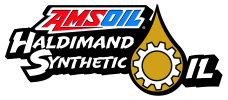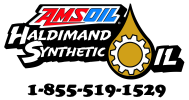Don’t Overlook Greased Components.
Ensuring Equipment Is Properly Greased Can Extend Equipment Life And Reduce Downtime.

How many of you who own a grease gun know how old the grease is inside the gun? I bet most people answered, “I’m not quite sure.” Outside the heavy-duty and off-road industries, applications requiring grease are among the most overlooked when it comes to maintenance. That’s partly because many equipment manufacturers are designing sealedfor- life components that require no additional lubrication. Nonetheless, there are applications that still require us to get out the old grease gun.
So, after first checking your owner’s manual to see what needs greasing, your next question is probably, “What grease should I use?” This is a great question because there are lots of different greases on the market. Just like motor oil, grease can be chosen based on the intended application. Applications that operate in or near water or are frequently subjected to moisture, like boat trailers or ATVs, need a grease with exceptional corrosion protection that stays in place to keep out moisture. These greases are likely termed “water-resistant” or something similar, like AMSOIL Synthetic Water-Resistant Grease (GWR). Heavily loaded applications, like dozers or tractors, need grease to prevent wear and corrosion, seal out contaminants and resist impact. Heavy-duty applications require grease with superior adhesive qualities that will stay in place during demanding service. Such products are likely labeled “heavy-duty” or “off-road,” similar to AMSOIL Synthetic Polymeric Off-Road Grease (GPOR). If you work with heavy-duty equipment or have customers who use it in their businesses, you know the importance of high-quality grease.
Although these two application examples might seem obvious, there are hundreds of others that can make people wonder if they are using the right grease. Oftentimes the equipment manufacturer will recommend a particular grease by providing the preferred NLGI grade and thickener system. This can be essential information for selecting the appropriate grease. The NLGI grade is a standard for grease consistency, or hardness. This nine-number scale runs from #000 to #6, with #000 being the thinnest, almost semi-fluid product, and #6 being very solid. By volume, most greases tend to be in the NLGI #0 to #3 range. There are several options because greases are purpose-built for specific performance.
Proper application and maintenance of grease-lubricated parts is essential to equipment performance and longevity. Grease-lubricated parts generally fail for one of the following four reasons:
1. The wrong type of grease was used. To ensure you are choosing the proper grease, be sure you understand specifics of the equipment, its operating environment and the loads or speeds the equipment endures.
2. The new grease is incompatible with the old grease. This typically results in excessive softening caused by the interaction of different thickening systems. This is normally identified by grease dripping or running out of the application. The safest strategy is to not mix greases, although there are published charts indicating which grease thickening systems are compatible.
3. The greased component was contaminated. This can happen in the pre-greasing stage from using a dirty grease-gun tip, not cleaning zerk fittings or using open containers of grease. Grease can also become contaminated from the introduction of water, dirt or chemicals into the lubricant while in the application.
4. Too much or too little grease was applied. Failing to maintain grease related parts with adequate amounts of the correct lubricant can result in component problems, equipment downtime and costly repairs. The lack of grease can cause failure, but too much grease is often the primary cause of failure because the excess grease causes high temperatures, which in turn oxidizes the lubricant.
Remember, don't overlook the importance of proper greasing. It's a small maintenance task that can have a big impact on the longevity and reliability of your equipment.
Grease life is affected by heat, mechanical stress and environmental conditions. As greases age, they tend to become dry and brittle and lose their fluid characteristics. Grease should be examined after as little as one year in storage to ensure the base oil has not significantly separated and that the grease has the proper consistency. Now, if you answered, “I’m not quite sure” to my first question, it’s probably time to change out the grease in that gun.





 Canada
Canada United States
United States